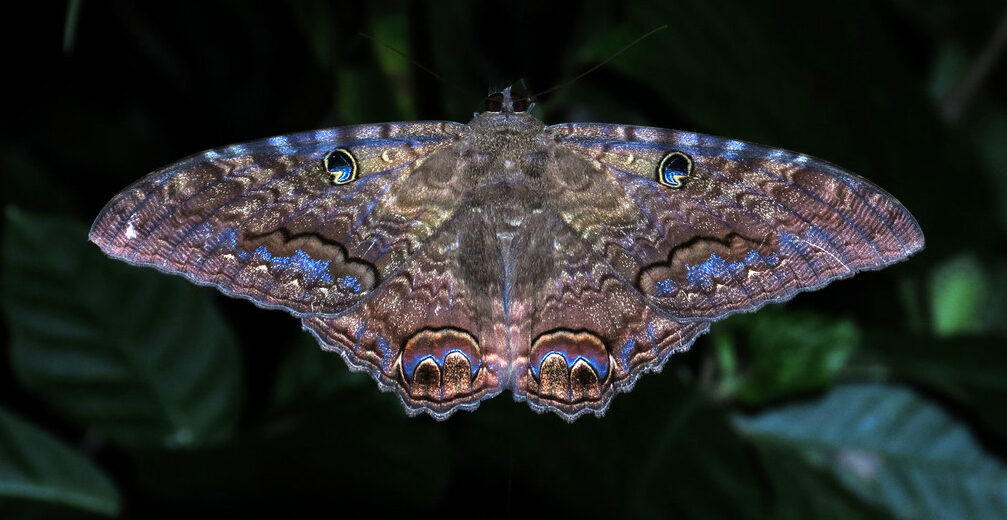
The black witch moth is considered a harbinger of death in Mexican and Caribbean folklore. It has been told that if one was to fly into your house it would bring bad luck. If a sick person is visited by this moth, that person is likely to die. Also, if one flies in your face, you may go blind. There are many tall tales of moths, especially this one. None of the myths are true.
First the Stats…
Scientific name: Ascalapha odorata
Length: Up to 3 inches
Wingspan: Up to 7 inches
Lifespan: Up to 4 weeks
Now on to the Facts!
1.) In Jamaica, under the name duppy bat, the moth is seen as the embodiment of a lost soul or a soul not at rest.
2.) Hawaiian culture, black witch moth mythology, though associated with death, has a happier note in that if a loved one has just died, the moth is an embodiment of the person’s soul returning to say goodbye!
3.) The Paraguayan people are afraid of the black witch moth, as there is a mistaken belief about the moth urinating over their human “victims” and thereby inoculating their eggs, which then develop into maggots developing under the skin!
4.) In Spanish, the black witch moth is known as “mariposa de la muerte” (Mexico & Costa Rica), “pirpinto de la yeta” (Argentina), “tara bruja” (Venezuela) or simply “mariposa negra” (Colombia); Nahuatl (Mexico) it is “Miquipapalotl” or “Tepanpapalotl” (miqui = death, black + papalotl = moth); Quechua (Peru) it is “Taparaco”; in Mayan (Yucatán) it is “X-mahan-nah” (mahan = to borrow + nah = house); Other names for the moth include the papillion-devil, la sorcière noire, the mourning moth or the sorrow moth.
5.) The black witch moth is found throughout Central America and Mexico, with its distribution extending from Brazil to the southern United States.
But wait, there’s more on the black witch moth!
6.) Like many moths, the witch moth is nocturnal (active at night).
7.) During the beginning of the rainy season in Mexico triggers a northern migration where they are often seen in the American southwest.
Did you know…?
In the movie Silence of the Lambs, serial killer Buffalo Bill inserted cocoons of Black Witch Moths into the mouths of his victims as a weird gesture of transformation! The moth on the movie poster is a Death’s Head Hawk Moth, but the actual cocoon was a Black Witch.
8.) The black Witch moth does not bite, sting, or carry diseases. It has a straw-like proboscis (tongue) used for drinking flower nectar.
9.) Black Witch moths have tympanic organs (ears) that detect the echolocation signals made by bats. This hearing helps them avoid bats when both are flying at night.
10.) Mature larvae are up to 2.75 inches long, brown to black with three irregularly shaped pale splotches and two parallel dark lines running down their backs.
Now a Short Black Witch Moth Video!
Also, check out the Critter Science YouTube channel. Videos added frequently!
Want to suggest a critter for me to write about? Let me know here.



